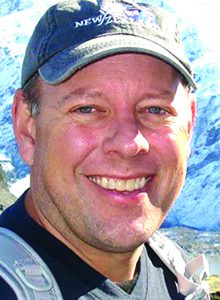
Courtesy EDC Warren County
By Jim Siplon
A wise mentor once told me, “If you can’t explain what you are doing and why you are doing it to your Grandmother, you don’t really understand your work like you think you do.” I have thought of that advice often as I am asked to help others understand the accelerating pace of change facing our business and collective communities. How would I explain to my now departed grandmother, a wise and kind woman who had lived through the Spanish Flu pandemic, the Great Depression and two World Wars by the time she was 35, what we do in our quest to position our area for long term success and have it make sense?
Perhaps by sharing the same ideas I do with our business and public leaders when I meet with them to discuss what economic development is and why it matters to them…we work together to build sustainable communities, and the economies that drive them. In this context, sustainability is an broader ambition than the somewhat more narrow environmental one that it is often used to describe. The Oxford Dictionary defines sustainability as “the ability to be maintained at a certain rate or level.” In other words, we endeavor to create working communities that have what they need to keep going, to endure and hopefully thrive.
For a long time, we associated our role in this ongoing challenge as advocates for the investments needed, such as public infrastructure and attractors of employers. The idea was that critical assets such as roads, power, water and sewer systems would attract new or entice existing employers to create jobs that would, in turn, underpin our local economy with wages and our municipalities with tax base. While that is still true, we have learned that it is only part of the work that must be done to chart a path toward long term success.
Employers need more than roads and sewers. They need workers in a world where the overall population is aging and the workforce shrinking. Those workers in turn need housing to move into, transportation and child care, among other things. Increasingly, our economy also needs to acknowledge and meet the emerging needs of micro-business and individuals to attract this often unseen part of our overall panorama – things like broadband and entrepreneurial support to help these newer parts of our economy and community also contribute and thrive. More deeply engaging these often unseen but vital new residents and micro businesses is a key area of investment for us.
This dynamic and ongoing process is playing out everywhere. We are not alone as we look at how to attract people as well as companies. Fortunately, we live in an area that is attractive to so many and has been for almost all of the history of the state and nation. Our natural resources, the physical beauty and richness of our area have been draws since the time of Hamilton, where the lyrics of the musical’s songs reference summering upstate around Lake George. The advent of the Adirondack Park further enhanced our appeal.
Adding these assets and the efforts to both share them and protect them as new conduits of economic development is part of our evolving role here at the EDC. We began to lay this vision out at our annual luncheon in October, in partnership with the brilliance of Dr. John Kelly, father of both IBM’s Watson and the groundbreaking Jefferson Project, and Dr. Marty Schmidt, the President of RPI and shepherd of MIT’s remarkable Kendall Square biotechnology emergence. The EDC is also now teaming with the Lake George Association in bringing the voice of business to the work they do. Together with all of them, the EDC is looking to build on the remarkable work to protect Lake George and the plethora of fresh water that is all around us. Our role in this exciting premise is to not only build new, investable channels of economic development that will continue that work, but to also help cement our region as a leader in this emerging space in a way that leverages our unique location as an asset rather than a constraint.
As I might say to my grandmother, we seek to build, maintain and grow not only our businesses but our communities as we also work to protect what makes us special. What we do has a lot of moving parts but at its core it’s about people and the place we share. It’s about understanding and developing what both the people and the place need to thrive not only today, but tomorrow. If we do it well, we will live in a place that is sustainable in both an economic and environmental sense that can continue with unique prosperity. The challenge is big and there is room for many as we work together to build sustainable communities and an economy that works for all-come join us.
